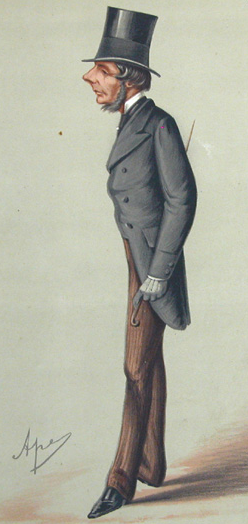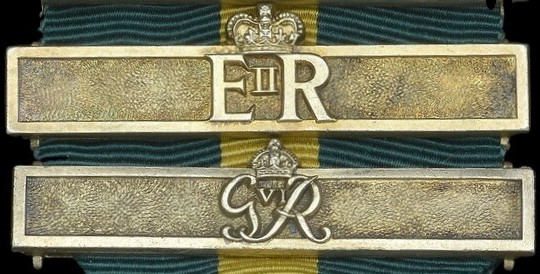|
Robert Grosvenor, 5th Duke Of Westminster
Lieutenant-Colonel Robert George Grosvenor, 5th Duke of Westminster, (24 April 1910 – 19 February 1979), was a British soldier, landowner, businessman and politician. In the 1970s he was the richest man in Britain. Background and early life Grosvenor was born Mr. Robert Grosvenor, younger son of Lord Hugh Grosvenor, himself the sixth son and tenth child of the 1st Duke of Westminster by his second wife, the Hon. Katherine Cavendish, daughter of the 2nd Baron Chesham. Grosvenor's mother, Lady Mabel Crichton, was the daughter of the 4th Earl of Erne. Grosvenor was educated at Eton College, an all-boys public boarding school in Berkshire. He was a member of the school's contingent of the junior division of the Officer Training Corps. He reached the rank of cadet lance corporal. Military career On 28 June 1938, Grosvenor was commissioned into the 11th (City of London Yeomanry) Light Anti-Aircraft Brigade, a newly formed Territorial Army unit of the Royal Artillery, ... [...More Info...] [...Related Items...] OR: [Wikipedia] [Google] [Baidu] |
Lady Jane Dawnay
Lady Jane Meriel Dawnay (''née'' Grosvenor; born 8 February 1953), formerly Jane Innes-Ker, Duchess of Roxburghe, is a British aristocrat and thoroughbred racehorse owner. Early life Dawnay was born Jane Meriel Grosvenor on 8 February 1953 to Robert Grosvenor and The Honourable Viola Lyttelton. She was raised in Northern Ireland where her father, in line for the dukedom of Westminster, was High Sheriff of Fermanagh. The family resided at Ely Lodge in Blaney, County Fermanagh. Her father became heir presumptive to the dukedom in 1963 and succeeded his brother as 5th Duke of Westminster in 1967. Thus, Jane became Lady Jane Grosvenor. She has two elder siblings: Leonora, Countess of Lichfield, and Gerald, 6th Duke of Westminster. In 1971, Lady Jane was presented as debutante at the International Debutante Ball at the Waldorf Astoria Hotel in New York City. As a young woman, Dawnay was a rumored girlfriend of Charles, Prince of Wales, later King Charles III. Racing Dawnay ... [...More Info...] [...Related Items...] OR: [Wikipedia] [Google] [Baidu] |
John Crichton, 4th Earl Erne
John Henry Crichton, 4th Earl Erne, (16 October 1839 – 2 December 1914), styled Viscount Crichton from 1842 to 1885, was an Anglo-Irish peer and Conservative Party (UK), Conservative politician. Early life Erne was the eldest son of Selina Griselda, Countess Erne (''née'' Beresford), and John Crichton, 3rd Earl Erne. His younger siblings included Col. Hon. Charles Frederick Crichton (who married Lady Madeline Taylour, eldest daughter of Thomas Taylour, 3rd Marquess of Headfort), Lt.-Col. Hon. Sir Henry George Louis Crichton, the ''aide de camp'' to King Edward VII, and Lady Louisa Anne Catherine Crichton. His paternal grandparents were Lt.-Col. Hon. John Crichton, Governor of Hurst Castle, and the former Jane Weldon (a daughter of Walter Weldon). His father had succeeded to the earldom upon the death of his grand-uncle, Abraham Creighton, 2nd Earl Erne (MP for Lifford (Parliament of Ireland constituency), Lifford from 1790 to 1797 who was declared insane in 1798 and then inca ... [...More Info...] [...Related Items...] OR: [Wikipedia] [Google] [Baidu] |
William Cavendish, 2nd Baron Chesham
William George Cavendish, 2nd Baron Chesham (29 October 1815 – 26 June 1882) was a British Liberal politician. Early life Chesham was born on 29 October 1815 into the Cavendish family, headed by the Duke of Devonshire. He was the eldest son of Charles Compton Cavendish, 1st Baron Chesham and the former Lady Catherine Susan Gordon. He had two younger sisters, Hon. Susan Sophia Cavendish (wife of Thomas Trevor, 22nd Baron Dacre) and Hon. Harriet Elizabeth Cavendish (second wife of George Byng, 2nd Earl of Strafford). His father was the fourth son of George Cavendish, 1st Earl of Burlington (himself the third son of former Prime Minister William Cavendish, 4th Duke of Devonshire) and Lady Elizabeth Compton (only child of Charles Compton, 7th Earl of Northampton). His maternal grandparents were George Gordon, 9th Marquess of Huntly and the former Catherine Cope (second daughter and co-heiress of Sir Charles Cope, 2nd Baronet). He was educated at Eton College. Career From 183 ... [...More Info...] [...Related Items...] OR: [Wikipedia] [Google] [Baidu] |
Hugh Grosvenor, 1st Duke Of Westminster
Hugh Lupus Grosvenor, 1st Duke of Westminster, (13 October 1825 – 22 December 1899), styled Viscount Belgrave between 1831 and 1845, Earl Grosvenor between 1845 and 1869, and known as The Marquess of Westminster between 1869 and 1874, was an English landowner, politician and racehorse owner. He inherited the estate of Eaton Hall in Cheshire and land in Mayfair and Belgravia, London, and spent much of his fortune in developing these properties. Although he was an MP from the age of 22, and then a member of the House of Lords, his main interests were not in politics, but rather in his estates, in horse racing, and in country pursuits. He developed the stud at Eaton Hall and achieved success in racing his horses, who won the Derby on four occasions. Personal life Hugh Lupus Grosvenor was born at Eaton Hall, Cheshire, the second and eldest surviving son of Richard Grosvenor, 2nd Marquess of Westminster and Lady Elizabeth Leveson-Gower, the younger daughter of George Leves ... [...More Info...] [...Related Items...] OR: [Wikipedia] [Google] [Baidu] |
Medal Bar
A medal bar or medal clasp is a thin metal bar attached to the ribbon of a military decoration, civil decoration, or other medal. It most commonly indicates the Military campaign, campaign or Military operation, operation the recipient received the award for, and multiple bars on the same medal are used to indicate that the recipient has met the criteria for receiving the medal in multiple Theater (warfare), theatres. When used in conjunction with decorations for exceptional service, such as gallantry medals, the term "and bar" means that the award has been bestowed multiple times. In the example, "Group Captain Leonard Cheshire, Victoria Cross, VC, Order of Merit, OM, Distinguished Service Order, DSO and two bars, Distinguished Flying Cross (British), DFC", "DSO and two bars" means that the Distinguished Service Order was awarded on three occasions. A British convention is to indicate bars by the use of asterisks; thus, DSO** would denote a DSO and two bars. Bars are also used ... [...More Info...] [...Related Items...] OR: [Wikipedia] [Google] [Baidu] |
Efficiency Decoration
The Efficiency Decoration, post-nominal letters TD for recipients serving in the Army Reserve (United Kingdom), Territorial Army of the United Kingdom or ED for those serving in the British Colonial Auxiliary Forces, Auxiliary Military Forces, was instituted in 1930 for award to part-time officers after twenty years of service as an efficient and thoroughly capable officer. The decoration superseded the Volunteer Officers' Decoration, the Colonial Auxiliary Forces Officers' Decoration and the Territorial Decoration. In the Commonwealth of Nations, British Commonwealth, the decoration was gradually superseded by national decorations in some member countries, in Canada by the Canadian Forces' Decoration in 1951, in the Union of South Africa by the John Chard Decoration in 1952 and in Australia by the Reserve Force Decoration in 1982. In the United Kingdom, the decoration was superseded by the Volunteer Reserves Service Medal in 1999. New Zealand continues to award the Efficiency ... [...More Info...] [...Related Items...] OR: [Wikipedia] [Google] [Baidu] |
World War II
World War II or the Second World War (1 September 1939 – 2 September 1945) was a World war, global conflict between two coalitions: the Allies of World War II, Allies and the Axis powers. World War II by country, Nearly all of the world's countries participated, with many nations mobilising all resources in pursuit of total war. Tanks in World War II, Tanks and Air warfare of World War II, aircraft played major roles, enabling the strategic bombing of cities and delivery of the Atomic bombings of Hiroshima and Nagasaki, first and only nuclear weapons ever used in war. World War II is the List of wars by death toll, deadliest conflict in history, causing World War II casualties, the death of 70 to 85 million people, more than half of whom were civilians. Millions died in genocides, including the Holocaust, and by massacres, starvation, and disease. After the Allied victory, Allied-occupied Germany, Germany, Allied-occupied Austria, Austria, Occupation of Japan, Japan, a ... [...More Info...] [...Related Items...] OR: [Wikipedia] [Google] [Baidu] |
North Irish Horse
The North Irish Horse was a yeomanry unit of the British Territorial Army raised in the northern counties of Ireland in the aftermath of the Second Boer War. Raised and patronised by the nobility from its inception to the present day, it was one of the first non-regular units to be deployed to France and the Low Countries with the British Expeditionary Force in 1914 during World War I and fought with distinction both as mounted troops and later as a cyclist regiment, achieving eighteen battle honours. The regiment was reduced to a single man in the interwar years and re-raised for World War II, when it achieved its greatest distinctions in the North African and Italian campaigns. Reduced again after the Cold War, the regiment's name still exists in B (North Irish Horse) Squadron, the Scottish and North Irish Yeomanry and 40 (North Irish Horse) Signal Squadron, part of 32 Signal Regiment. History Background The raising of Militia units in Ireland commenced with the "Militia A ... [...More Info...] [...Related Items...] OR: [Wikipedia] [Google] [Baidu] |
City Of London Yeomanry
A city is a human settlement of a substantial size. The term "city" has different meanings around the world and in some places the settlement can be very small. Even where the term is limited to larger settlements, there is no universally agreed definition of the lower boundary for their size. In a narrower sense, a city can be defined as a permanent and densely populated place with administratively defined boundaries whose members work primarily on non-agricultural tasks. Cities generally have extensive systems for housing, transportation, sanitation, utilities, land use, production of goods, and communication. Their density facilitates interaction between people, government organizations, and businesses, sometimes benefiting different parties in the process, such as improving the efficiency of goods and service distribution. Historically, city dwellers have been a small proportion of humanity overall, but following two centuries of unprecedented and rapid urbanization, more ... [...More Info...] [...Related Items...] OR: [Wikipedia] [Google] [Baidu] |
Lieutenant Colonel (United Kingdom)
Lieutenant colonel (Lt Col), is a rank in the British Army and Royal Marines which is also used in many Commonwealth of Nations, Commonwealth countries. The rank is superior to Major (United Kingdom), major, and subordinate to Colonel (United Kingdom), colonel. The comparable Royal Navy rank is Commander (Royal Navy), commander, and the comparable rank in the Royal Air Force and many Commonwealth of Nations, Commonwealth air forces is Wing commander (rank), wing commander. The rank insignia in the British Army and Royal Marines, as well as many Commonwealth countries, is a crown above a Order of the Bath, four-pointed "Bath" star, also colloquially referred to as a British Army officer rank insignia, "pip". The crown has varied in the past with different monarchs; the current one being the Tudor Crown. Most other Commonwealth countries use the same insignia, or with the state emblem replacing the crown. In the modern British Armed forces, the established commander of a regiment ... [...More Info...] [...Related Items...] OR: [Wikipedia] [Google] [Baidu] |





